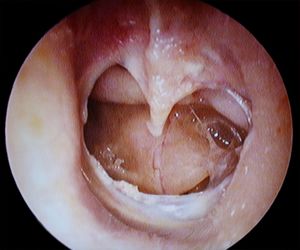We need you! Join our contributor community and become a WikEM editor through our open and transparent promotion process.
Lightning injuries
From WikEM
(Redirected from Lightening)
Contents
Background
- Second most common storm-related injury
- Approximately 30 million ground strikes per year
Injury Mechanisms[1]
- Direct strike = patient is hit directly by lightning current
- Often fatal and may cause penetrating injuries[2]
- Splash Injury = current "splashes" to the patient from another object which is struck first
- Conduction = patient is in content with an object (e.g. metal fence) that is struck by lightning
- Ground current = Also known as step voltage. Occurs when the current spreads out from the initial strike point and then travels through the patient's body
- Blunt Trauma = Secondary injury pattern that results when the lightning causes a wave of force to propagate through the air to the patient or as a secondary object strikes the patient.
Prehospital Care
- Reverse triage = in lightning-related MCI cases, care should be delivered to patients in cardiac arrest first
- Patients struck by lightning who are alive on EMS arrival will likely survive[1]
- All patients should be transported, preferably to a burn center
- Consider spinal precautions in all patients
Clinical Features
- Injuries often involve multiple organ systems[3]
Cardiopulmonary
- Both cardiac and respiratory arrest may be present without evidence of external injury
- Ventricular dysrhythmias, asystole, and QT prolongation most common
- Although cardiac automaticity may spontaneously return, apnea may persist
- Duration of apnea rather than cardiac arrest is the critical prognostic factor
- Myocardial infarction after lightning injury is unusual
Neuro
- Symptoms are usually immediate and transient or delayed and permanent
- Seizure, LOC, confusion, amnesia, extremity paralysis
- Pupillary dilation or anisocoria may occur that is unrelated to brain injury
- Cannot neuroprognosticate anyone for 24hrs based on pupilsScript errorScript error[citation needed]
Vascular
- Vasomotor spasm may cause loss of distal pulses, coolness of extremities, loss of sensation
- Keraunoparalysis - temporary paralysis due to sympathetic nervous system activation and vascular spasm
- Resolves spontaneously
- Compartment syndrome is rarely the cause (skeletal muscle unaffected in strikes)
Ocular
- Cataracts may occur weeks to years after injury (must document careful eye exam in all patients)
- Other injuries include vitreous hemorrhage, corneal abrasion, retinal detachment
Auditory
- Blast effect producing Tympanic Membrane Rupture is relatively common
Derm
- Lichtenberg figures (ferning pattern) - pathognomonic for lightning strike
- Occur due to electron showering over the skin, not true burn; disappear within 24hr
- Flash burns
- Similar to those found in arc welders; appear as mild erythema, may involve cornea
- Punctate burns
- Look similar to cigarette burns; are full-thickness
- Contact burns
- Occur when metal close to the skin is heated from the lightning current
Neuro
- Keraunoparalysis - a neurologic and muscular "stunning" that can follow lightning strikes and usually resolves spontaneously. It is thought of as a neurologic phenomenon but is a result of arterial vasospasm from catecholamine release. It will resolve within hours.
- Limb weakness, sensory abnormalities, absent pulses, cold temperature extremities
Ortho
- Compartment Syndrome and rhabdomyolysis are unlikely due to short duration of lightning current
Special Populations
- 50% of pregnancies have fetal demiseScript errorScript error[citation needed]
Differential Diagnosis
Evaluation
- Clinical diagnosis
Work-Up
- CBC, chem, total CK, UA
- ECG
- CT Brain(for patients with coma, altered mental status, confusion)
- Other imaging and workup is directed toward visible or suspected injuries
Management
- Aggressive resuscitation
- Lightning-induced Cardiac Arrest has better prognosis than CAD-induced Cardiac Arrest
- Hypotension is not an expected finding (i.e. suggests traumatic blood loss)
- Maintain cervical spine precautions
Disposition
- Admit patients with persistent muscle pain or neuro, cardiac rhythm or vascular abnormalities
- Dishcarged patients require follow up to assess for delayed effects of lightning injury
See Also
References
- ↑ 1.0 1.1 Gatewood M, Zane R. Lightning injuries. Emery Med Clin N Am. 2004; 22: 369-403
- ↑ Waes. O et al. "Thunderstruck": Penetrating Thoracic Injury From Lightning Strike. Annals of Emergency Medicine. 63(4). 2014. 457-458
- ↑ Cooper M. et al. Blumenthal R: Lightning Injuries. Auerbach PS ed: Wilderness Medicine, 6th ed. Philadelphia: Elsevier/Mosby; 2012

.jpg/300px-Lightning_injury_(1).jpg)
